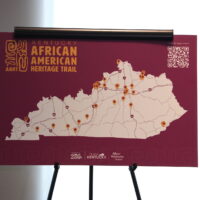There was no dissent and no debate Tuesday when the Senate passed legislation to make daylight saving time year-round, and the idea has majority support in national public-opinion polls, but some Americans may change their minds and dissent when they realize that “fast time” in the winter will make daylight begin unusually late in places near the western edge of time zones.
For example, on Dec. 20, the sun will rise in Indianapolis at 8:02 a.m. Eastern Standard Time. On daylight time, that would be after 9 a.m., a time when many businesses and almost all offices and schools are open. In early January, it would be 9:06, according to the federal government’s sunrise-sunset calculator. (Just because the winter equinox has the shortest day doesn’t mean it has the latest sunrise. Also, Indiana once exempted itself from daylight time but now follows it.)
Farmers have long objected to daylight saving time, and the National Association of Convenience Stores opposes the change, Reuters reports. The NACS told Congress, “We should not have kids going to school in the dark.” And while there is evidence that changing clocks has bad effects such as traffic accidents and health episodes, sleep scientists think there would be even more risk from year-round daylight saving time. They like standard time.
“Sleep scientists point out that standard time — winter time — is more closely aligned with the sun’s progression,” The New York Times reports. “They say that bright mornings help people wake up and stay alert, while dark nights allow for the production of melatonin, the hormone that triggers sleep. When it is too light at night, it can be hard to fall asleep. When it is too dark in the morning, it can be hard to wake up. Together, that could lead to chronic sleep deprivation, which has been linked to a range of health conditions, like obesity, heart disease and diabetes. Light cues from the sun also regulate metabolism, insulin production, blood pressure and hormones.”
Citing such views, Washington Post analyst Aaron Blake decries the lack of debate on the resolution. He notes that when Richard Nixon decreed year-round daylight time to fight the energy crisis in 1973, Americans said they liked the idea, but changed their minds when it took effect: “The overriding reason: Without standard time in the winter, they were going to work when it was darker and colder, and they were putting their kids at the bus stop when it was darker and colder.”
The resolution, offered by Republican Sen. Marco Rubio of Florida, passed by unanimous consent, meaning there were no objections and no recorded vote, but “There were plenty of speeches made for the Congressional Record,” Luke Broadwater and Amelia Nierenberg of the Times note.
In the House, “A spokesman for Speaker Nancy Pelosi referred a reporter to comments made by Representative Frank Pallone Jr. (D-N.J), chairman of the Energy and Commerce Committee, who wrote on Twitter that he was ‘hopeful that we can end the silliness of the current system soon’,” the Times reports. But Majority Floor Leader Steny Hoyer of Maryland was wary.
The legislation would continue to allow states and localities to exempt themselves until its effective date of Nov. 5, 2023, so that could lead to a patchwork of time zones that the Uniform Time Act of 1966 was passed to prevent. It could also lead to a reversal of the mostly westward shift of U.S. time-zone lines in the last 70 years.
The Rural Blog is a publication of the Institute for Rural Journalism and Community Issues based at the University of Kentucky.





